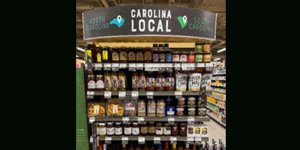 The Supplier Pathway To The Retail Grocery Shelf – Every year, national brands as well as small food manufacturers propose new products which compete for limited retail store space. Retailers are offered many more products than they can carry, which correlates to a great deal of bargaining power. That reality along with the fact that a grocery chain can track customers shopping habits better than any industry puts them in a position of control. What’s trending today may drive shelf space decisions, but products and brands that “turn” (perform) command the shelf space for the long term. Every square inch of shelf space and floor space is planned to maximize sales performance… whether it’s in-line space, pods, end caps and even warehouse space.
The Supplier Pathway To The Retail Grocery Shelf – Every year, national brands as well as small food manufacturers propose new products which compete for limited retail store space. Retailers are offered many more products than they can carry, which correlates to a great deal of bargaining power. That reality along with the fact that a grocery chain can track customers shopping habits better than any industry puts them in a position of control. What’s trending today may drive shelf space decisions, but products and brands that “turn” (perform) command the shelf space for the long term. Every square inch of shelf space and floor space is planned to maximize sales performance… whether it’s in-line space, pods, end caps and even warehouse space.
So, what pathway is the best supplier pathway to the retail grocery shelf? The traditional presentation direct to the retail buyer/category manager for the product(s) you carry assures you a chance to open lines of communications that are keys to success in the long run. Maintaining those communication lines will aid in your products longevity on the shelf. The presentation typically provides a sample of the product; information on the cost of the product and the projected financials (e.g., sales and margins); the marketing plans to promote the product to consumers; and research on purchasing trends and the success of various products in the category. The retailer and supplier also typically discuss funds – slotting, promotional, introductory allowances or discounts – some of which would lower the retailer’s per unit purchase cost for an initial period. The location of “local/ regional sections” vary by retailer planograms and can also vary by store. These includes in-line shelf space, end caps and various product discovery pods, fixtures, stands, tables and racks.
The pathways to the shelf relating to distribution and merchandising are all controlled by the retailer. For products that check the box as “local or regional”, and show potential in sales volume, distribution options include direct store delivery (DSD), DSD through approved 3rd party distribution aggregators/ merchandising partners, or the retailer agreeing to stock item(s) at their warehouse. Key is to understand that the distribution and merchandising of a product is much different than the manufacture of the product.
THE PATHWAY OF LEAST RESISTANCE– There is no doubt that “local” products have and will continue to be important trends, but performance on the shelf determines longevity. The Got To be NC program and our grocery partners take great pride in working together to streamline product distribution. It is our collective desire to provide our membership with options that will establish your retail grocery presence quickly and effectively. Many retailers have established relationships with distribution aggregators/ merchandising partners whose product mix focuses on “local”. This business model serves both our membership and retailers well in streamlining the pathway to the shelf.
Ask our Retail Marketing Specialists more about this option to open doors to retailers within North Carolina!
Retail Maketing Specialist: Randy Maness randy.maness@ncagr.gov : 919-707-3133
Retail Marketing Specialist: Bruce Whitehead bruce.whitehead@ncagr.gov : 919-707-3140
